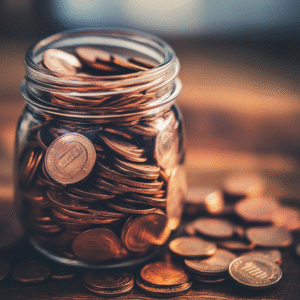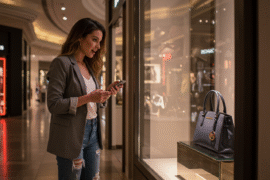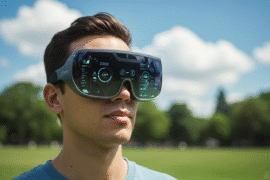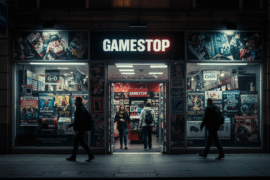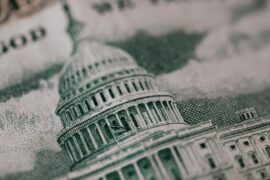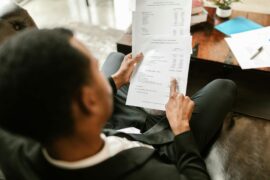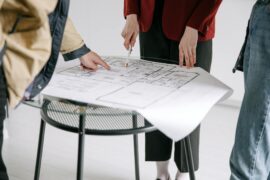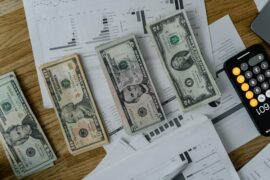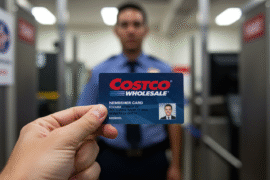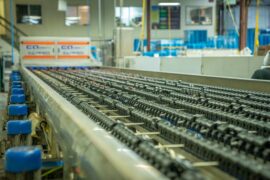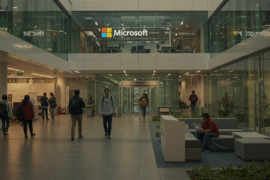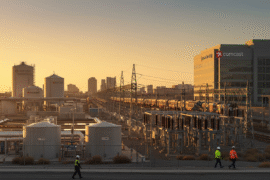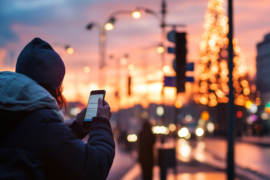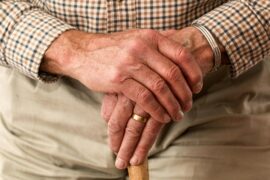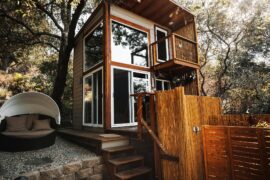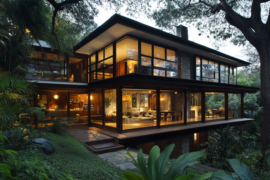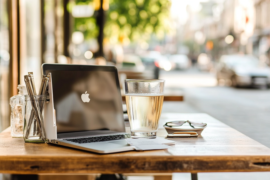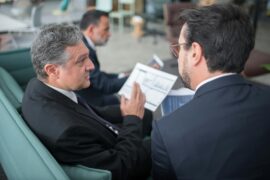This article may contain references to products or services from one or more of our advertisers or partners. We may receive compensation when you click on links to those products or services. Nonetheless, our opinions are our own.
Imagine strolling through the heart of San Francisco, the once-famous U.N. Plaza now a mere shadow of its former self. You might not expect a group of dedicated skateboarders to be in charge of bringing it back to life, but that’s what happened. For this, you’ll learn how these people, who are often thought of as just people who like to have fun, became important players in turning an underused urban space into something useful. Skateboarders brought U.N. Plaza back to life by being creative, working together, and getting the community involved. Now, it’s a lively place that celebrates freedom, culture, and connection.
- Role of Skateboarders in Revitalizing U.N. Plaza
- The “Street Plaza” Concept: A Game Changer
- The Power of Public-Private Partnerships and Specific Funding:
- Beyond the Concrete: Programming and Placemaking
- The Cultural Shift: From Nuisance to Asset
- Exploring the Community Bond: How Skateboarding Cultivated Local Engagement
- Lessons from the Skateboarding Culture: Design and Urban Planning Insights
- Practical Steps for Supporting Creative Community Projects in Your Area
- The Sustainable Impact: Combining Urban Space Use with Youth Empowerment
- Your Involvement Matters: How You Can Advocate for Urban Renewal in Your City
- Conclusion
-
Frequently Asked Questions
- What led skateboarders to take an active role in the rebuilding of U.N. Plaza?
- How did skateboarders contribute to the design process?
- What challenges did skateboarders face during the rebuilding efforts?
- What were the key features included in the redesigned U.N. Plaza?
- How has the rebuilt U.N. Plaza impacted the community?
- What can other cities learn from San Francisco’s experience with skateboarders and urban design?
- Recommended Reads
Role of Skateboarders in Revitalizing U.N. Plaza
Skateboarders have become unlikely champions of revitalization in U.N. Plaza in recent years, turning the once-neglected area into a lively center of activity. These skaters have turned the area into a place for both locals and tourists to hang out by embracing their passion and creativity. You might be surprised to learn that a group of passionate people can change how urban spaces are used, creating a sense of community and breathing new life into the heart of San Francisco. They have shown through their art and skill that skating can be both a sport and a way to bring people together, breaking down social barriers and starting important conversations between communities.
Contributions include:
-
Community Engagement: Skateboarders often host events that bring together various age groups, promoting inclusivity and shared experiences.
-
Design Inspiration: Their unique approach to urban navigation has inspired local artists and urban planners to rethink public space design.
-
Awareness Raising: By frequently showcasing their talents, skaters have drawn media attention to the need for revitalized public areas.
-
Artistic Expression: Murals and street art often accompany skate spots, enhancing the visual appeal of U.N. Plaza.
As skateboarders continue to carve their mark on U.N. Plaza, their influence may serve as a template for other urban areas seeking creative, community-focused renewal.
You’ve already got a great overview, but let’s break down some of the “how” and “why” elements that made the U.N. Plaza revitalization a truly unique and successful case study.
The “Street Plaza” Concept: A Game Changer
Traditional skateparks are often purpose-built, fenced-off areas, which can sometimes feel isolated from the rest of the urban fabric. The U.N. Plaza project leaned into the “skate plaza” model, which is a significant distinction:
- Mimicking Urban Architecture: Instead of half-pipes and bowls (though some elements are present), the design incorporates features that mimic real-world street obstacles: ledges, stairs, gaps, benches, and banks. This is crucial because street skating is about creatively interacting with existing city architecture.
- Homage to SF’s Skate History: The designers, including local skateboarders and design firms like Verde Design, explicitly drew inspiration from iconic, sometimes defunct, San Francisco street spots. This wasn’t just building a skatepark; it was creating a new version of the city’s skate heritage. The “skateable pyramid” is a direct nod to Paris’s Place de la République, a celebrated public space that embraces street skating.
- Seamless Integration: The features are designed to be part of the plaza’s overall aesthetic, not simply plunked down. This makes it less of a “skatepark” and more of a multi-functional urban space that happens to be excellent for skateboarding. This integration is what makes it “nationally modeled” and a “hybrid playscape.”
The Power of Public-Private Partnerships and Specific Funding:
The $2 million initial renovation, and subsequent expansions, weren’t solely funded by the city. This project exemplifies effective public-private partnerships:
- San Francisco Recreation and Park Department: This city agency was the driving force, overseeing the overall revitalization effort for the Civic Center area, of which U.N. Plaza is a key component.
- The Skatepark Project (TSP): Formerly the Tony Hawk Foundation, TSP is a non-profit dedicated to creating public skateparks and advocating for skateboarding. Their involvement brought expertise in skatepark design and community engagement.
- Converse: As a major skateboarding brand, Converse provided significant philanthropic support and expertise. Their involvement, and that of their team riders like Olympic skateboarder and architect Alexis Sablone, demonstrates the commercial and cultural legitimacy of skateboarding. Sablone’s “skateable geometric art pieces” are a fantastic example of blending art, architecture, and function.
- Civic Center Community Benefit District (CBD): This organization helps leverage city contributions with philanthropic partners to fund ongoing programs and events that keep the plaza active and safe. This ongoing management is crucial for long-term success.
Beyond the Concrete: Programming and Placemaking
The success isn’t just about the physical transformation; it’s about the programming and the intentional placemaking:
- Consistent Activation: The plaza isn’t just open; it’s activated. Free classes (yoga, Zumba, tai chi, dance), chess and mahjong instruction, ping pong, teqball, and regular events ensure a continuous stream of positive activity.
- Addressing Social Issues Directly: The problem of drug dealing and crime was a major driver for the revitalization. The increased foot traffic and positive activity, directly attributable to the diverse programming including skateboarding, acts as a “natural surveillance” mechanism. The 79% reduction in daytime drug-related incidents is a compelling statistic that highlights this impact.
- A “Comeback” Strategy: Mayor Daniel Lurie explicitly links the revitalization of U.N. Plaza to San Francisco’s broader “comeback” and the goal of making the city more welcoming and safer. This project is a tangible example of that strategy in action.
- Learning from Global Examples: San Francisco looked to successful models in cities like Paris, Barcelona, Copenhagen, and Philadelphia, which have also embraced multi-use public spaces that include skateboarding. This demonstrates a willingness to learn from best practices worldwide.
The Cultural Shift: From Nuisance to Asset
Perhaps the most profound impact is the shift in perception of skateboarding itself. Historically, skateboarders were often seen as disruptive and unwelcome in public spaces. The U.N. Plaza project showcases a new paradigm:
- Official Recognition: The city’s willingness to collaborate with skateboarders and even hire a pro skateboarder/architect for design elements signifies a deep respect for skateboarding as a legitimate urban activity and art form.
- Community Building: Skateboarding, by its very nature, fosters community. The plaza provides a safe, legal, and well-designed space for this community to gather, practice, and connect.
- Public Art and Function: The skateable art pieces exemplify how skateboarding can contribute to the aesthetic and functional richness of public spaces, moving beyond purely utilitarian design.
Exploring the Community Bond: How Skateboarding Cultivated Local Engagement
Skateboarding in San Francisco has grown into a powerful movement that has not only improved the city’s appearance but also brought people together. Skateboarders brought a wave of creativity and spirit to the U.N. Plaza, turning a space that had been ignored into a lively, welcoming center. You’d be surprised at how a love of skating can get people involved in the community, bringing in people from all walks of life.
The collaborative spirit among skateboarders led to initiatives aimed at uniting skaters and non-skaters alike. These include:
-
Skate Clinics: Local skaters running free sessions for youth, fostering mentorship.
-
Art Installations: Collaborative projects reflecting community culture, enhancing the plaza’s aesthetic.
-
Pop-Up Competitions: Events that encourage friendly competition and showcase local talent.
-
Advocacy Efforts: Mobilizing voices to push for more inclusive urban planning.
Skateboarders not only improved the physical environment of U.N. Plaza through these activities, but they also built stronger ties with their neighbors. The way skaters and residents work together shows how shared interests can create long-term social value.
Lessons from the Skateboarding Culture: Design and Urban Planning Insights
Skateboarding culture teaches important lessons about how to combine design, function, and community involvement in public spaces. As you watch skateboarders use every part of the city, you can see how they naturally change their surroundings to meet their needs. This ability to change shows how important it is to include everyone in urban planning.
Takeaways for planners:
-
Adaptability Is Key: Just as skaters see potential in overlooked areas, designs should allow for spontaneous gatherings and creative expression.
-
Community Input Matters: Engaging local users yields insights that traditional planning often overlooks.
-
Encourage Interaction: Designs that promote conversation and gathering—like modular seating—can energize spaces.
As San Francisco rebuilt U.N. Plaza, the popularity of skateboarding showed how important it is for public spaces to be not only beautiful, but also useful, open to everyone, and based on how people actually use them.
Practical Steps for Supporting Creative Community Projects in Your Area
You can help creative projects like the U.N. Plaza initiative by taking steps that encourage teamwork and progress. To get ideas for new projects, start by talking to local artists and designers. Go to community meetings and workshops where your input is welcome and makes a difference.
How you can contribute:
-
Volunteer Your Time: Assist during the planning or setup stages of events or redesigns.
-
Organize Crowdfunding Efforts: Help raise funds for materials and logistics.
-
Spread the Word: Use social platforms to amplify the project’s goals and share updates.
-
Offer Your Space: If you have access to venues, suggest them for meetings or gatherings.
| Action | Description |
|---|---|
| Attend Meetings | Engage with project leaders and community members. |
| Connect with Businesses | Seek sponsorship or in-kind support from local companies. |
| Create a Feedback Loop | Encourage community input to refine project goals. |
By getting involved, you’re not only supporting a local project, you’re also helping to create a creative culture that makes shared spaces more interesting.
The Sustainable Impact: Combining Urban Space Use with Youth Empowerment
A unique mix of creativity, involvement, and youthful enthusiasm is driving an amazing change in the heart of San Francisco. This project is more than just recycling concrete; it’s about giving a new generation power.
When skateboarders got together to improve U.N. Plaza, they brought a vision that combined fun with environmentally friendly city planning. Their work together shows how informal groups can make a real difference.
Results include:
-
Community Ownership: Local skateboarders now view the plaza as a space that belongs to them.
-
Adaptive Design: Skateable art installations invite physical activity and visual appreciation.
-
Environmental Considerations: The use of sustainable materials underscores a commitment to the planet.
| Benefits | Description |
|---|---|
| Inclusivity | Designed for all ages and abilities. |
| Economic Growth | Boosted local businesses by increasing foot traffic. |
| Skill Development | Taught youth valuable project management and design skills. |
This initiative proves that with collaboration and creativity, even nontraditional communities can drive inclusive, eco-conscious urban progress.
Your Involvement Matters: How You Can Advocate for Urban Renewal in Your City
It’s not just city planners who are in charge of urban renewal; everyone is. The skateboarders in San Francisco showed how people can work together to take back and reimagine public space.
Ways to participate in your city:
-
Attend City Meetings: Show up, speak up, and make your voice count.
-
Join Advocacy Groups: Collaborate with others passionate about better city design.
-
Use Social Media: Share, educate, and rally support for community initiatives.
-
Volunteer for Clean-Ups: Your physical effort demonstrates local investment and care.
You can help turn empty areas into lively community centers by stepping up. Your point of view is important. Like the skaters who changed U.N. Plaza, what you do can make a difference.
Conclusion
The revitalization of U.N. Plaza is a strong reminder that change in cities doesn’t always start at city hall; it often starts with a skateboard. A once-forgotten space has become a lively, useful landmark thanks to creativity, inclusion, and collaboration at the grassroots level. This story shows how community-driven projects can create real value—social, cultural, and even economic—for people who are learning about personal finance for the first time. If you want to fight for public resources, help local projects, or just learn how working together can change the world, remember that change is possible and it often starts with people who care enough to move forward.
Frequently Asked Questions
What led skateboarders to take an active role in the rebuilding of U.N. Plaza?
Skateboarders have long seen U.N. Plaza as a valuable public space for their community. When city officials announced plans to revitalize the area, many skateboarders recognized an opportunity to contribute their ideas and energy, advocating for a design that would celebrate both their sport and the diverse culture of the plaza.
How did skateboarders contribute to the design process?
Skateboarders participated in community meetings and design workshops, sharing their insights on what features would make the plaza more skate-friendly while appealing to a broader audience. They emphasized the importance of accessible elements like smooth surfaces and multipurpose benches that could serve as skating features and social seating.
What challenges did skateboarders face during the rebuilding efforts?
One major challenge was overcoming the perception that skateboarding is disruptive or undesirable. Some officials and community members were initially hesitant to support skate-friendly features. Skateboarders had to advocate for their inclusion, demonstrating how their presence could enhance community engagement and urban vitality.
What were the key features included in the redesigned U.N. Plaza?
The final design included several skateboard-friendly elements, such as smooth concrete areas, skateable sculptures, and benches that also function as skating obstacles. Zones were designated to balance the needs of skateboarders and pedestrians, ensuring safe and harmonious use of the space.
How has the rebuilt U.N. Plaza impacted the community?
The revitalized U.N. Plaza has become a dynamic public space that welcomes a wide range of visitors—from skateboarders and artists to families and tourists. Its inclusive design encourages interaction, cultural events, markets, and spontaneous gatherings, reinforcing the area’s role as a central, vibrant hub.
What can other cities learn from San Francisco’s experience with skateboarders and urban design?
Other cities can learn the value of including active community members—like skateboarders—in the design and planning process. Their involvement can lead to creative, inclusive, and functional public spaces that serve a wider population. By prioritizing collaboration, cities can foster environments that reflect real community needs and drive sustainable engagement.

Reviewed and edited by Albert Fang.
See a typo or want to suggest an edit/revision to the content? Use the comment form below for feedback.
At FangWallet, we value editorial integrity and open collaboration in curating quality content for readers to enjoy. Much appreciated for the assist.
Did you like our article and find it insightful? We encourage sharing the article link with family and friends to benefit as well - better yet, sharing on social media. Thank you for the support! 🍉
Article Title: How Skateboarders Helped Rebuild San Francisco’s U.N. Plaza
https://fangwallet.com/2025/06/06/how-skateboarders-helped-rebuild-san-franciscos-u-n-plaza/The FangWallet Promise
FangWallet is an editorially independent resource - founded on breaking down challenging financial concepts for anyone to understand since 2014. While we adhere to editorial integrity, note that this post may contain references to products from our partners.
The FangWallet promise is always to have your best interest in mind and be transparent and honest about the financial picture.
Become an Insider

Subscribe to get a free daily budget planner printable to help get your money on track!
Make passive money the right way. No spam.
Editorial Disclaimer: The editorial content on this page is not provided by any of the companies mentioned. The opinions expressed here are the author's alone.
The content of this website is for informational purposes only and does not represent investment advice, or an offer or solicitation to buy or sell any security, investment, or product. Investors are encouraged to do their own due diligence, and, if necessary, consult professional advising before making any investment decisions. Investing involves a high degree of risk, and financial losses may occur including the potential loss of principal.
Source Citation References:
+ Inspo
There are no additional citations or references to note for this article at this time.

